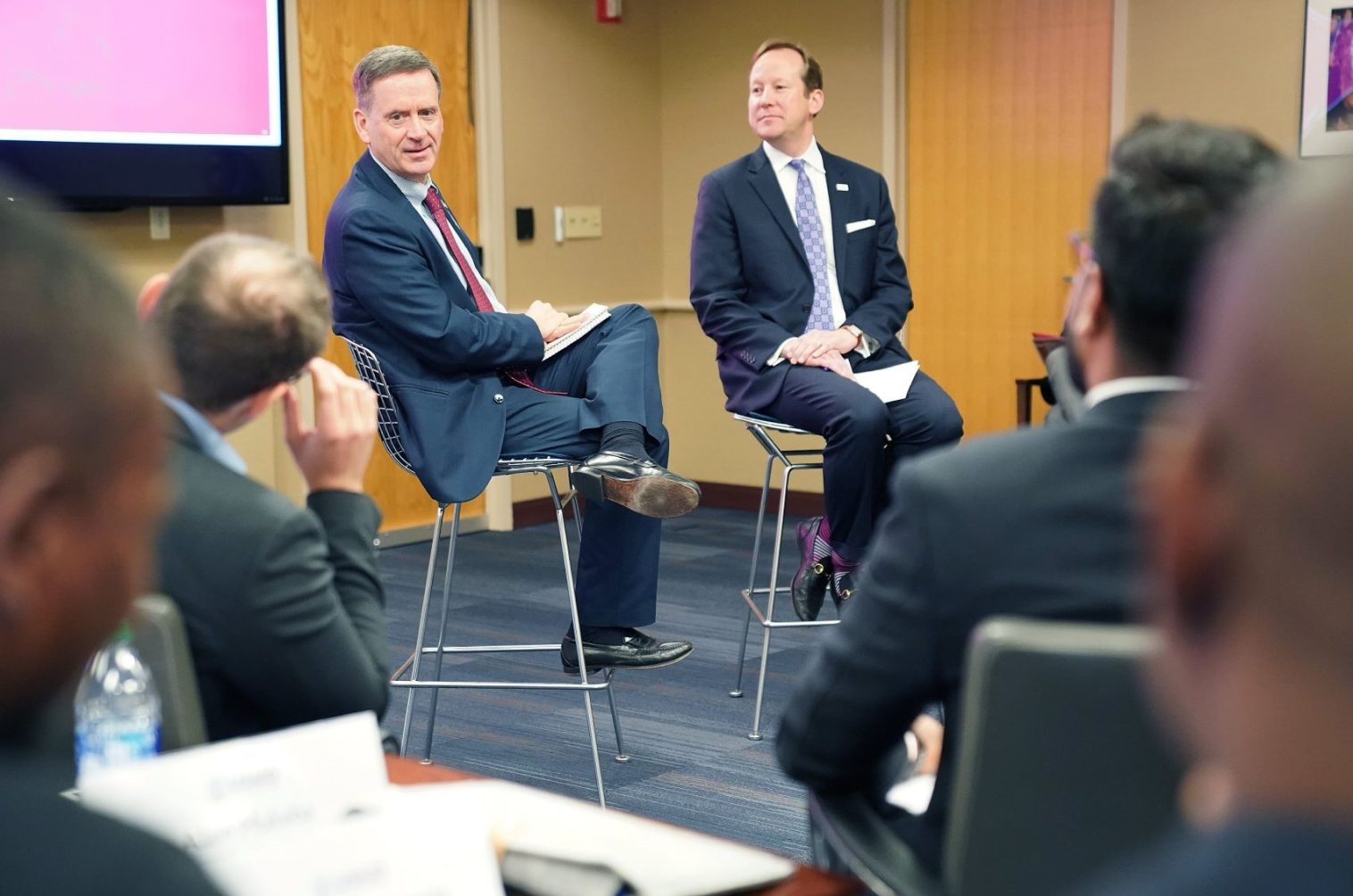The Comprehensive Guide to Produce a Persuasive Business Proposal That Sell
Before we get started, one thing needed to establish is that winning business proposal is your opportunity to showcase your business’s skills and your unique strategy to meet a client’s needs. It is the business proposal that represents your company, your team, your expertise, your reputation.
Developing a persuasive proposal is not a quick or easy task. But, when you do well, it is the key to business success. In fact, starting a proposal may feel overwhelming. However, if you divide the process of writing your proposal into sections, it will make things less overwhelming. Then you can tackle them one-by-one and finally, you’ll probably create some great content you can reuse for future proposals.
Remember that a business proposal is a sales tool, not an information packet. The purpose of the proposal is to make a persuasive case that leads to a successful sale. To win the business, your proposal should consist of the following content order:
What Should Be Included in The Content of a Persuasive Business Proposal?
Proposal title
The title should be flexible, engaging, and be a one-line overview for the entire proposal.
‘Proposal’ as a title is an opportunity loss. It’s boring and doesn’t provide the audience with any valuable information.
Imagine the kind of title they want to read. Write a title that states a benefit to the clients.
We’ll use an example of an engineering services to a construction company:
‘Rock Solid Foundations: Geotechnical Site Assessment Offer for XYZ Construction’.
If you’re not sure about the title, don’t worry. It can be composed at the end of the writing stage. That might even be a better time to title the document as the writing process can inspire a perfect title.
Executive summary for a proposal

The executive summary should be exactly like this: a summary for a busy executive.
It should synthesize all of the main information of the proposal. This information should be presented in an attractive and easily digestible way so that an executive can quickly understand the entire proposal.
It should also introduce relevant information of the proposal and highlight how it can solve the customer’s issue. The summary has to be persuasive, clear, and consist only of concepts from the proposal. No new information should be introduced!
Furthermore, you can ask for the business in the executive summary, or maybe when you deliver or present the proposal. Keep being active in work.
Overview or opportunity statement
This section dives into the client’s issue and your solution.
Here, you can demonstrate your thorough understanding of the client’s problem. It may or may not take the shape of a full analysis. The depth of analysis would depend on the specific proposal.
Some clients may have clarified their exact problem. Others may just need a goal or KPI (Key Performance Indicator) they want to meet and they are maybe unsure of their current barrier. Whether brief or in-depth, the first goal is to indicate your knowledge of their problems. Customers need to feel that their issues are understood in order to trust that a proposed solution will be successful.
Your bid should then solve their problem neatly and effectively. Clarify how each aspect or stage of your proposed strategy can add to the overall solution. The readers should be able to draw a line from your solution to their problem.
Use specific terms and jargon-free terminology to outline your offer. Regardless of the technical solution, the text must be accessible and audience-focused. In the example of an engineering service, the document would be written differently if the reader, i.e. the CEO or construction company manager, is completely comfortable with geotechnical work or undertaking it for the first time.
This section also defines the scope of the solution. It’s very important to clarify where the solution begins and ends. For example, a website revamp may include the website design, graphics, and hosting, but it does not include the copy or images development.
A proposal may provide additional services beyond requested ones if your experience deems it valuable to the client. It is an opportunity to show your knowledge of successful implementation and it might be potential to increase the budget. Most importantly, clarifying the scope will ensure both parties are on the same page, reducing future misunderstandings.
Deliverable and timeline
Following the overview, your proposal should clarify the specifics of ‘what’ and ‘when’. This section will offer specific details of how the solution will unfold.
The deliverables should be clearly identified as to what the client will expect to receive or have accomplished. They should be specific and never over- or under-the-promise.
The timeline shows the client when the deliverables will be completed. The timeline may be strict, according to client specifications. It may be flexible, based on your anticipated timeline or depending on the offer acceptance date.
Having a clear and realistic timeline is key because projects often take longer than expected. So, make sure you find out potential weaknesses in your timeline and address them quickly. A detailed timeline will show a clear understanding of the project scope and implementation.
Creating a proposal budget
Budget is very important. Some people might skip through the document and read the budget first, then return to the rest.
Therefore, it should be accurate, competitive, and easy to understand.
While both project and hourly budgets are popular, using a fixed-price quote where feasible is highly recommended. Hourly projects can make it difficult for a client to estimate for overruns. A fixed-price bid allows you to estimate the entire project’s cost and clearly compete on value.
No matter which type of budget, the total bid value should be broken down into smaller categories.
For example, public relations services for a book launch may submit an offer for $3,500. This figure may seem reasonable to some clients while being shocking to others. To ensure all clients understand the number, break down the costs. In this case, break out the $3,500 into copywriting for $700, media liaison for $800, media training for $1200, book launch logistics preparation for $500, and administration for $300. The additional details allow the client to understand your solution and your value.
Separating the costs and analysis also allow clients to understand the higher investment areas. Your overall proposal should support each budget item by a clear client benefit.
A section of “about us”
Many people might be wondering: ‘Is this the first section?’
Actually, putting the ‘About Us’ section at the top of the proposal is the most common mistake that we have seen in several proposals.
Let’s discuss! If you’re the reader, what will be your first question?
In fact, the client is usually concerned with ‘what is the solution?’ and ‘how much does it cost?’ If these categories are acceptable, then the client looks into the company background.
This order keeps the audience in mind. The proposal tells the story of why your solution is the best, and the About Us section is the compelling last lines, not the introduction.
In this section, you can be creative. It should provide contact information, background on your company, the key personnel on the project. It can also include statistics, case studies, or sample work that would be convincing evidence of past success stories in similar projects.
Graphics & design
Graphics can make it easier for the reader to understand your proposal. They can also be poorly so designed or flashy would make them detract from the project proposal. Graphics can help to make a positive first impression. So, if there is a graphic designer at your company, you should ask them for advice before you start the proposal. They may have an easy template or some tutorial tips.
Here are some ways graphics can make your proposal better:
- Easier-to-read data tables
- Clearer charts and data visualizations
- Easier to skim by using typographic hierarchy
- Freely using whitespace
- Choose easy-to-read fonts
There are some common mistakes people usually make when creating graphics:
- Cheesy stock images
- Images that have a disproportionate proportion
- Widows and orphans (in typography)
- Using too many colors that are not parts of your brand
- Using too many typefaces (stick to about two or three)
- Uncompressing PDF files for export (don’t make the file too large)
- Low-resolution images that are pixelated
- Not using transparent PNG logo files
Terms and conditions
The fine print falls at the end. Many companies have a standard proposal T&C to insert. Other companies may not ask for this information because the details will be negotiated upon selection. The client and the industry will identify the content included in this section.
Templates
In-house or online, proposal templates can be a big time-saver as long as they’re good templates. By this, I mean that you can reuse a well-organized template several times for similar projects.
Core value
You don’t need to re-create the wheel each time you submit a new proposal. If the core of your business doesn’t change, generic information can be aggregated in an industry-effective order for reuse.
In-house templates
Many companies have developed internal templates for standard industry proposals. Previous successful proposals are often used as a basis for company templates.
Rise of online software
Online proposal software is growing in availability and popularity. There are numerous vendors bringing the in-house template into the online space. This format allows cloud-based proposal editing, pre-designed templates, and interactive proposals.
Potential issues
Templates can tempt the writer into creating a generic proposal. And this is risky.
Each bid must be created to meet the client’s specific needs. Language or content that worked well for one prior client maybe not impressive to another. Notwithstanding, it can be too easy to re-use the same template information without revamping for the new audience.
Note: Use templates with caution!
The template can be a tool, but it should not always be used. In fact, some proposals will fall easily into an existing template sample while the others will need to be started from scratch. The preparation phase will allow the writer to determine if a template is appropriate.
Make sure that you have multiple individuals proofread the document. One of the most common ways to lose a bid is by having the content that is clearly copied from a previous proposal.
3 Key Factors That Significantly Affect the Winning of The Business Proposal:
Customer identify – the essential first step when writing a proposal
This is a first step that every proposal writer should begin with, when writing a proposal, to determine what to include and what to omit: analyze your audience carefully. We always want to deliver content that meets the needs of the audience. We can’t do that if we don’t understand their perspectives, experiences, challenges, and needs at the beginning.
In essence, at this first most important point in the proposal writing process, you need to figure out who is your audience. Everything else – content, solutions, product recommendations, tone, and even pricing and presentation – hangs fully on audience needs. Defining your audience is the critical stage in proposal writing.
Narrow the focus of your ideal customers and avoid making broad target market claims, such as every woman, every man or all baby boomers. Very few products can attract that vast of a group of people, and overstating your market will prevent you from developing viable targeting strategies to attract clients.
Moreover, identifying your audience will help you know what information you should include and what you should ignore, and also tier its importance in the proposal. Matching your information directly to your audience needs makes your business proposal stand-out among others.
At this point, don’t give details about your company’s technical knowledge or unique solutions; that will come later. Don’t muddy the waters yet.
Recognition – the key role in winning a business
If you’re struggling to get more leads and conversions for your small business, there’s probably a deeper problem here: you may be struggling with your brand identity and recognition.
Recognition (or further, branding) plays a big role in marketing. After all, it’s how consumers think about your company name, service, or product, so it needs to be spot-on. Keeping your brand identity consistent is essential because a consistent identity and high recognition will help people to remember you and trust you.
If the brand recognition is done correctly, your business should be recognized. The further goal of that is to get potential customers to recognize the product or service without too much effort. As a result, it leads to higher chances to win business proposals, which grows your winning rate and ultimately boosts the total revenue.
There are many types of marketing strategies for different kinds of businesses. Here’s a list of efficient marketing strategies to raise your brand recognition:
- A/B testing
- Marketing campaign
- Marketing channels
- Marketing copy
- Attribution marketing
- Comparative marketing
- Coupons
- Giveaways
- Samples
- Event marketing
- Mass Media
Besides, brand recognition will help people lean toward your product and the ones that they have never heard of. At the same time, you should always keep in mind that your competitors are also working on their brand recognition, which means that their brands could be more recognizable. Keep differentiating yourself and make sure to add value to your products so as to get to the next level.
Value – what makes clients choose you
The way you present the value of your business contributes significantly to your brand recognition and chances of winning proposal. Perception of value is one of the most important elements making of your price. If the clients don’t think they are getting full value for money, you’ll be unlikely to value your service or product – you can’t lift prices to maintain profitability without losing customers. However, if your customers believe that they are getting value for money, they will remain loyal despite price increases.
Value is a statement about character, ethics, and integrity of a business. When the stated values are fulfilled, they can become powerful components of the brand recognition and identity. In fact, effectively conveying your value to potential prospect is critical for your business to achieve its objectives, whether that’s to sell products or services, convince a target investor to buy shares in your company, or recruit and retain employees. In some cases, companies might focus on their values above all else.
Potential customers need to be equipped with information about your services: How can they benefit them and how are they different from competitors’ services? Customers should be able to answer the questions, ‘Why should I get translation services from this person?’ Once the customers are interested, they will seek for proof. A good way to provide evidence for your services is to include testimonials from other satisfied customers, on your website or in your marketing materials or on your LinkedIn profile, etc.
Therefore, it is very important to focus on what they will get from your services. Customers need to understand what kind of service you offer, what they can expect from you, and how your service can be a solution for their needs.
Then, how to convey your business’s value?
Here are 6 steps to help you express your business’s value to the clients:
- Identify what value means to each of the prospects
- Define what your product or service does, keep focusing on benefits and features
- Understand how your clients consume and process information
- Show how the benefits of your products/services meet their needs and create value for them
- Monitor, measure and continuously improve
- Move your prospects to action
Remember that it is your job to convey the value of your service, your product to the audience. It is not the audience’s job to figure it out. Put in the effort before pitching new proposals to new clients and determine how to make it as easy as possible for them to understand why they should choose you or how your product will change their problems.
Final Thoughts:
There are many reasons affecting the opportunity of winning a business proposal. However, creating a proposal that has a strong impact on clients is not very difficult if you provide all of the elements above. Of course, there is no perfect template for every individual, every need or industry but you can apply these insights in order to improve your work.
If you have any questions or you want to find out more about business proposal writing tips, leave us a comment. Here, we welcome your opinions.









